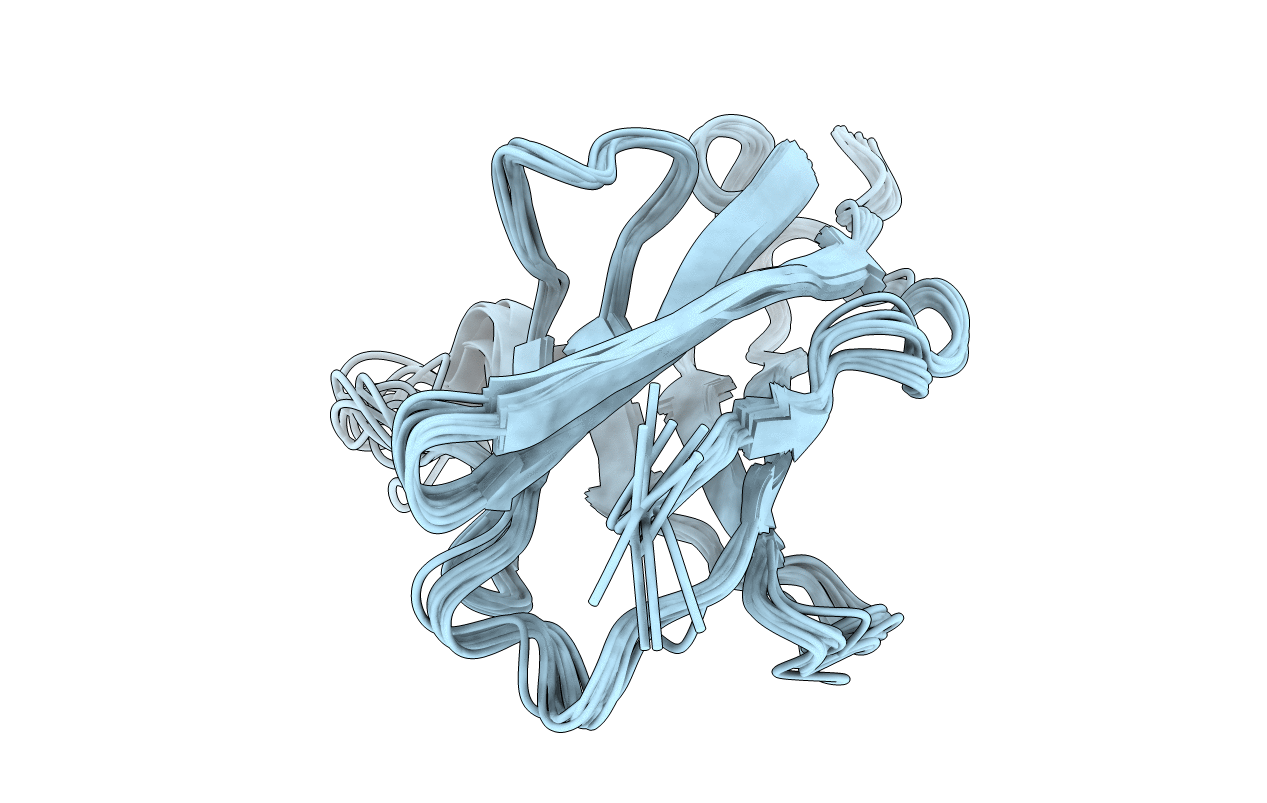
Deposition Date
2019-11-03
Release Date
2020-10-14
Last Version Date
2024-11-06
Entry Detail
PDB ID:
6L7Z
Keywords:
Title:
Solution NMR structure of the N-terminal immunoglobulin variable domain of BTNL2
Biological Source:
Source Organism:
Mus musculus (Taxon ID: 10090)
Host Organism:
Method Details:
Experimental Method:
Conformers Calculated:
100
Conformers Submitted:
10
Selection Criteria:
structures with the lowest energy


